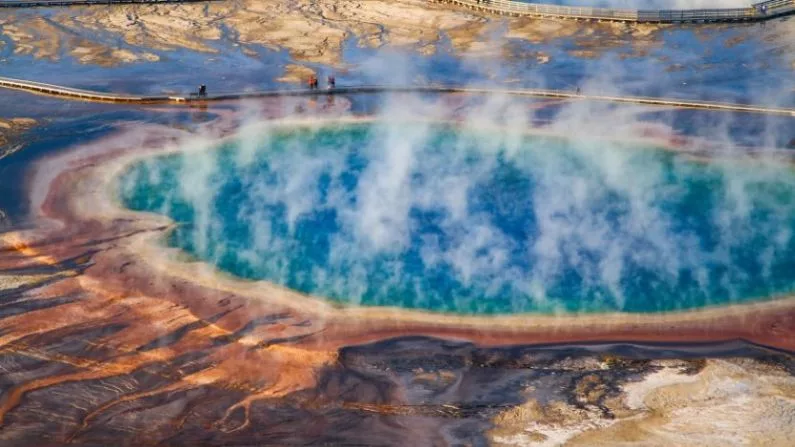This story comes through a content-sharing partnership with Wyoming Public Media.
Just like our phone cameras have improved, so have the imaging tools used in Yellowstone National Park, giving scientists the best look yet of what is going on underground in the park.
Over the past couple years, researchers with the University of Utah and University of New Mexico studied over 600 locations in the park to get a better understanding of something called the “magma chamber” – which is basically a heat engine that drives everything we see on the surface at the park like geysers.
“We’re not talking about a giant cauldron of boiling, melted rock,” Michael Poland, the scientist in charge of the Yellowstone Volcano Observatory, said. “A magma chamber is really a mixture of solid, liquid and gas.”
Poland said for a long time we did not know how all that material was distributed – specifically the “melt” or semi-liquid material.
“Maybe it’s evenly spaced throughout this large volume, it could be concentrated in a few pods here or there, we don’t really know,” he said.
With the better imaging, they found that the semi-liquid material is in horizontal layers, and that there is likely more of it.
Understanding all of this can help us better understand volcanic systems in Yellowstone and across the world, as well as help with predicting earthquakes and eruptions.
Poland added that what they found so far does not show Yellowstone is any closer to a huge eruption. The underground is still mostly solid and it would take something huge for that to change.
“So that’s something that would be accompanied by extraordinary changes that we’d see at the surface in terms of earthquake activity and ground deformation, and thermal and geyser emissions, gas emissions, things like that,” he said.
Estimates show the most recent volcanic eruption in the park was about 70,000 years ago.
To view more information on the study click here.






